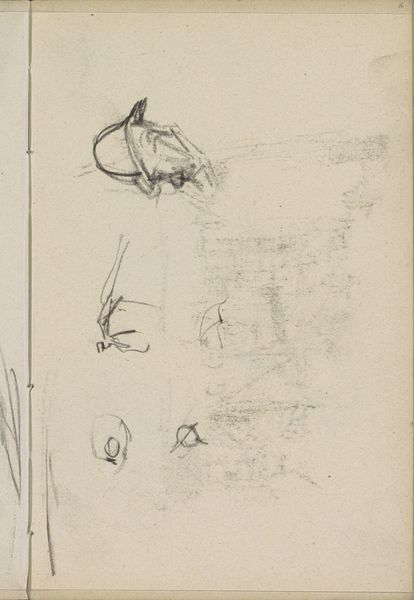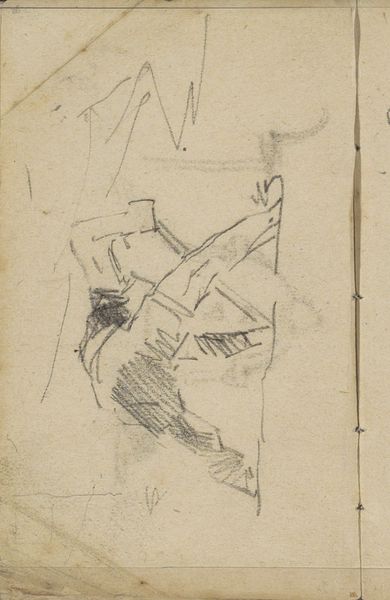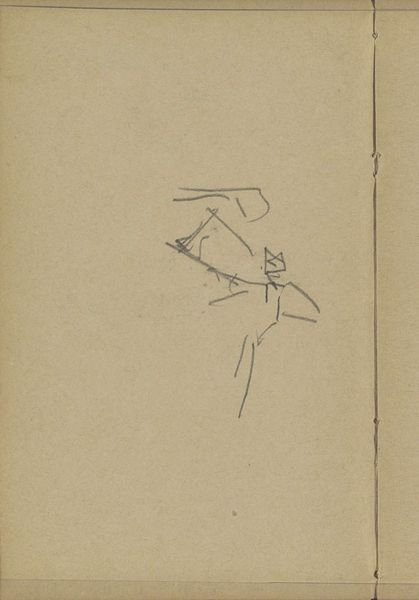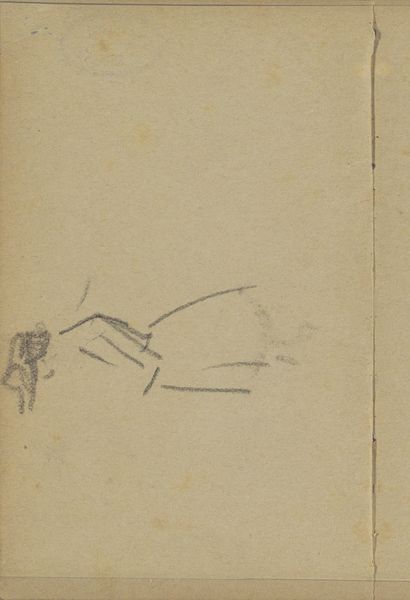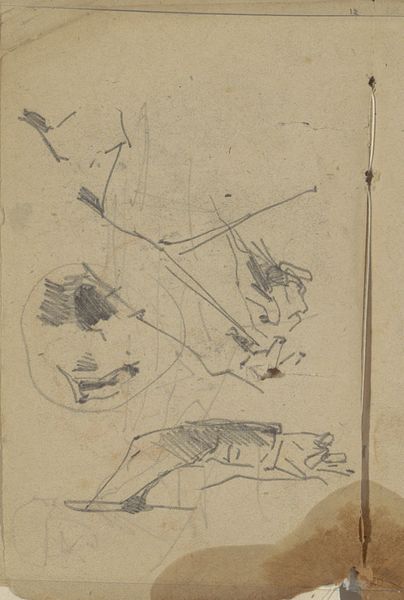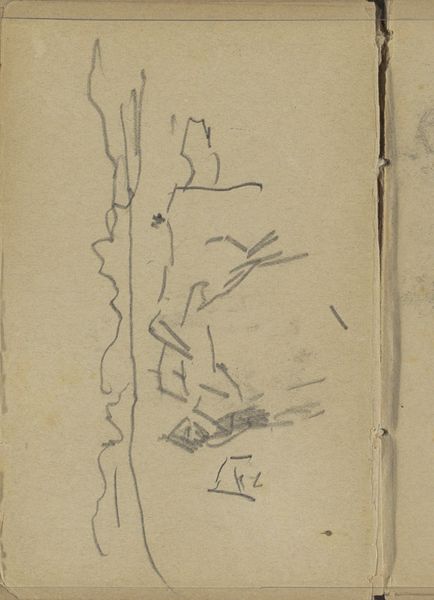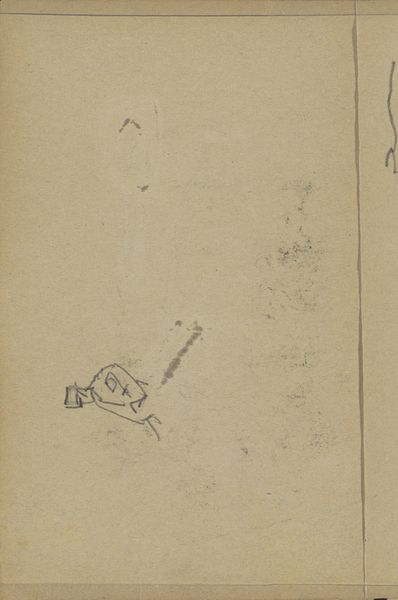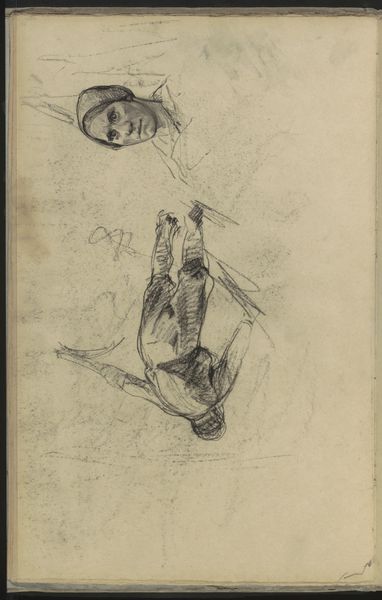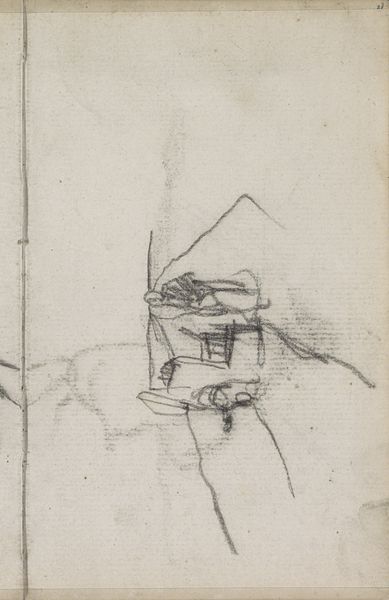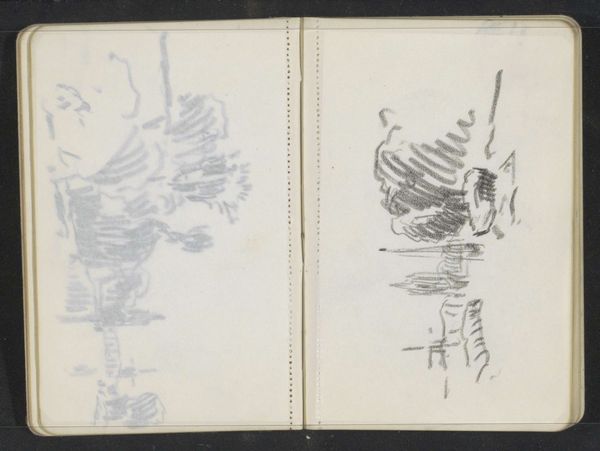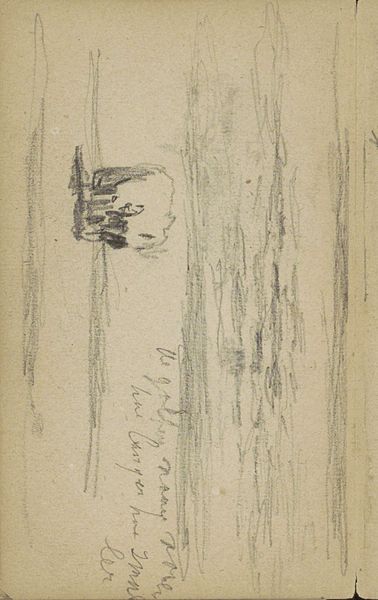
Figuurstudie en een compositiestudie met figuren 1887 - 1891
0:00
0:00
georgehendrikbreitner
Rijksmuseum
drawing, pencil
#
portrait
#
drawing
#
amateur sketch
#
toned paper
#
light pencil work
#
impressionism
#
sketch book
#
figuration
#
personal sketchbook
#
idea generation sketch
#
sketchwork
#
ink drawing experimentation
#
sketch
#
pencil
#
sketchbook drawing
#
sketchbook art
Copyright: Rijks Museum: Open Domain
Curator: Right now, we're looking at "Figuurstudie en een compositiestudie met figuren," or "Figure study and a composition study with figures," a pencil drawing on toned paper by George Hendrik Breitner, made sometime between 1887 and 1891. It's currently held here at the Rijksmuseum. It has the loose, dreamlike quality I adore. It feels as though someone captured figures floating through the mist! Editor: Yes, I'd say the preliminary nature strikes me first. Breitner is evidently workshopping something here—it's more about the architecture of figures than fleshed-out forms. The upper grouping looks like figures in a cafe, perhaps? Looming, indistinct forms with a sort of… waterfall descending. Below, an artist reclining perhaps, absorbed in his own craft. Curator: Precisely. Breitner wasn't aiming for perfection; these drawings feel immediate and intuitive, glimpses into his creative process. Like rifling through his mind! And that waterfall? Perhaps a draped figure or curtain, playing with light and shadow. It almost seems to prefigure abstraction, doesn’t it? I sense an honesty here – he is showing the world his workings, warts and all. Editor: Perhaps not so much abstraction as economy. Notice the strategic use of hatching and shadow, how minimal the mark-making is in constructing form, and guiding the eye? It’s quite disciplined, formally. We see it especially in the reclining figure, composed of a bare minimum of outlines yet so easily 'readable'. And of course the sketchbook style gives license to all sorts of experimentation that more finished works preclude. Curator: I love that idea of “licence” here; he gives himself permission to make visible a thought rather than a 'perfect' image. Editor: Agreed! Breitner's process itself becomes the subject, revealing not just 'what' he depicts but crucially 'how' he arrived there, letting us share that creative moment. A window onto artistic thinking. Curator: This little study speaks volumes about embracing the rough edges, that the in-between stages are often where the real magic lives. Editor: I think it reminds us that the endpoint, in art, is so much less vital than the process. Breitner shows us the value is not in the final 'product' but that constant generative 'making'.
Comments
No comments
Be the first to comment and join the conversation on the ultimate creative platform.
